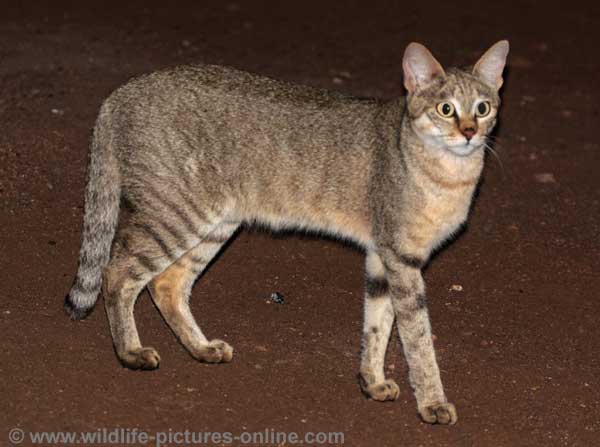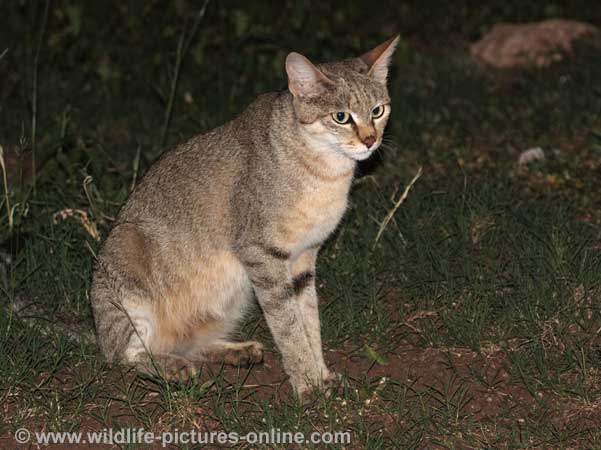Contact Details: Scotch Macaskill, Dirt Road Traders, Currys Post Road, Howick, KwaZulu-Natal, South Africa. Tel: +27 (0)82 578 2329. Privacy: Your privacy is guaranteed. See our Privacy Policy for more. This site accepts advertising and other forms of compensation - see Disclosure and Advertising for details. Site updated: 2022. Copyright © 2002 - 2022 Scotch Macaskill
|

Custom Search
|
African Wild Cat Standing Side-On Caption: African Wild Cat keeps a watchful eye on its surroundings while on a nocturnal visit to our bungalow in South Africa's Kruger National Park. © Scotch Macaskill
Caption: African Wild Cat keeps a watchful eye on its surroundings while on a nocturnal visit to our bungalow in South Africa's Kruger National Park. © Scotch MacaskillCamera: Canon EOS 450D; Lens: Canon EF 70-300mm f/4-5.6L IS USM zoom; Focal Length: 160mm; Aperture: f/4.5; Shutter Speed: 1/60; ISO: 800 The African Wild Cat (Felis silvestris), while similar to a domestic cat, is usually larger and its legs are longer (as in picture above). However, the main feature that distinguishes an African wild cat from a domestic one is the reddish hair on the back of the ears, which is not found in domestic cats. While the wild variety crosses freely with domestic cats, the red on the ears will be missing in the offspring. It's also not found in feral cats. The cat in the picture above came prowling around our bungalow in the Kruger National Park, clearly looking for scraps from the nightly "braais" or barbecues that are common in the park. This indivdidual was pretty chilled, suggesting it visited the bungalows regularly and had become habituated to people. As can be seen from the photo, and the one below, the fur has a reddish tinge which is more pronounced on the underparts, while there are black stripes on the legs and tail, which ends with a black tip. The chin and throat are white. Wild cats are usually solitary except during a brief mating period, or when the mother is still caring for her kittens. Litters of one to five kittens are born after a gestation period ranging from 56 to 65 days.
Permitted Uses: See Terms of Use. Go to >> Next Photo or Back to Wildlife Pictures Intro |
|
|
|

Comments
Have your say or ask any questions in the comment box below.